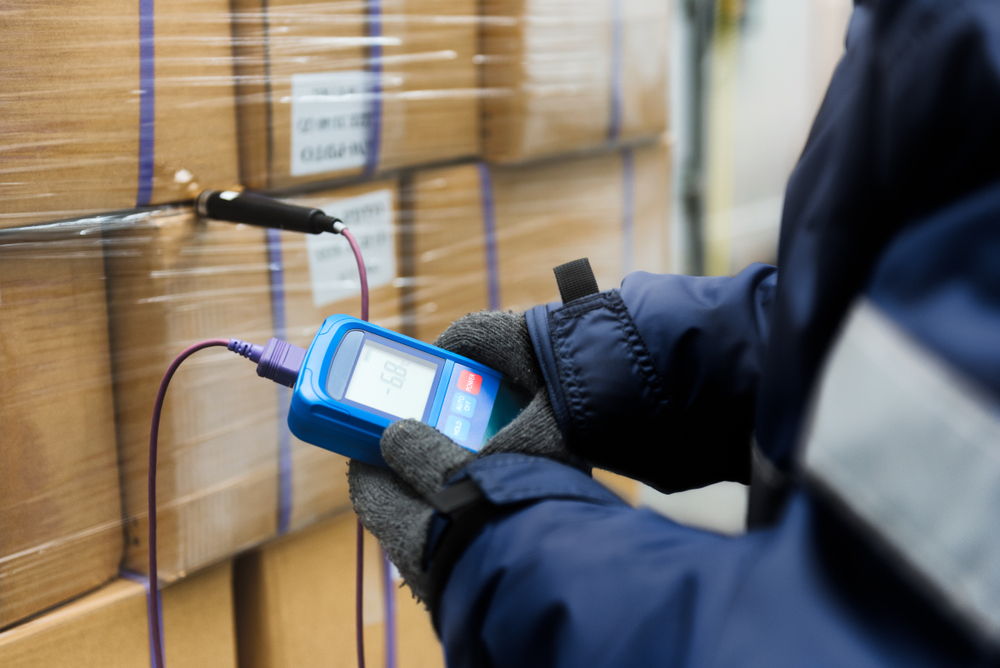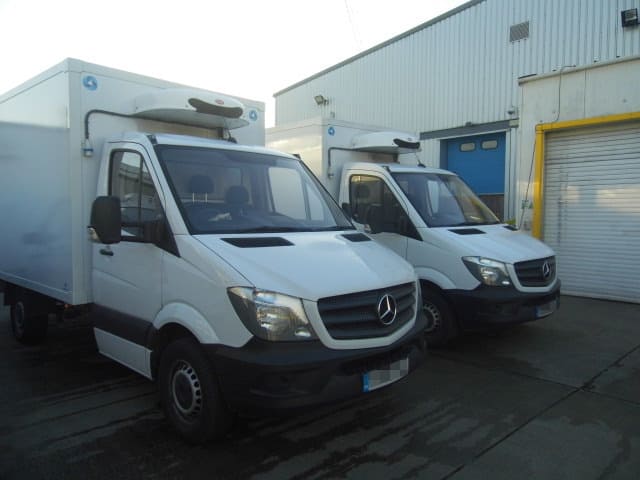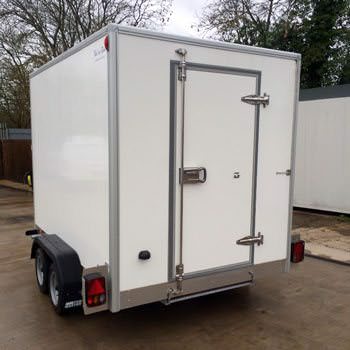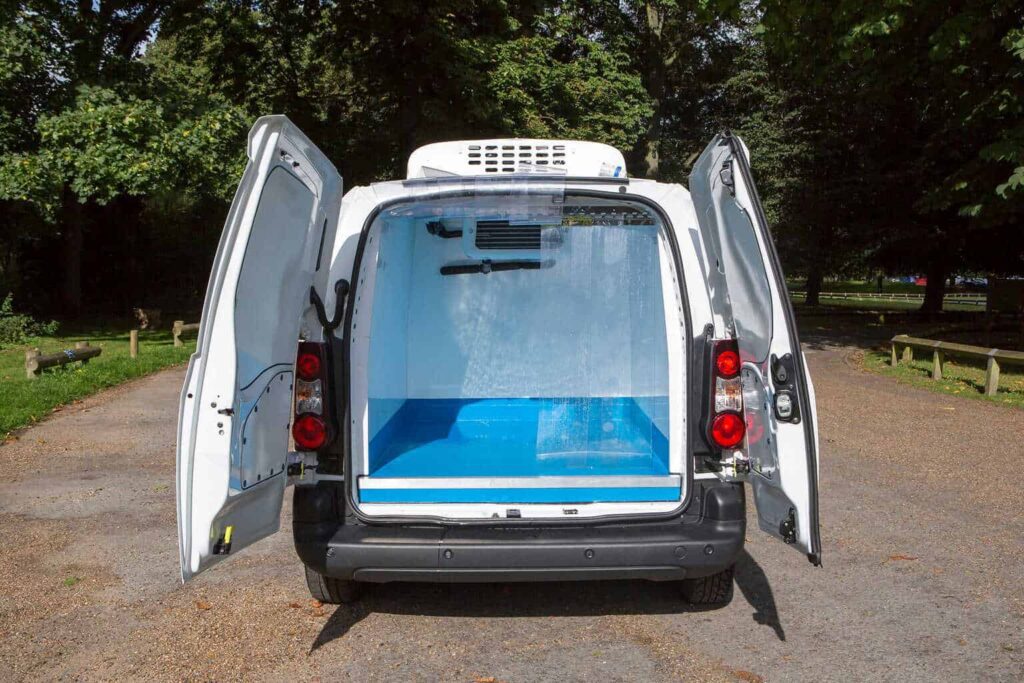In the fast-paced world of temperature-sensitive logistics, visibility and control are essential. Whether you’re transporting perishable food, pharmaceuticals, or floral products, maintaining strict temperature standards and delivery efficiency is non-negotiable.
This is where refrigerated van telematics comes into its own—offering actionable data that can transform the way your business operates.
At FridgeXpress, we specialise exclusively in short-term and long-term hire of refrigerated vans across the UK. Our fleet is equipped with the latest telematics technology to give business owners the tools they need to enhance compliance, reduce costs, and improve customer service. In this guide, we’ll show you how to get the most out of your telematics system and why it’s becoming a must-have feature for any business that relies on refrigerated transport.
What is Telematics?
Telematics refers to the integrated use of telecommunications and information processing to monitor and manage vehicles remotely. In a refrigerated van, telematics typically includes:
- GPS tracking
- Temperature monitoring
- Driver behaviour reporting
- Refrigeration unit status
- Fuel usage and efficiency data
- Route and time optimisation tools
The data gathered is transmitted in real-time to fleet managers or business owners via secure online portals or mobile apps.
Why Telematics is Crucial for Refrigerated Vans
Refrigerated vehicles carry temperature-sensitive cargo, making monitoring and control far more critical than in standard transport operations. The addition of telematics gives you greater control, accountability, and operational oversight, allowing you to respond to issues as they happen.
Here are a few of the key benefits:
1. Real-Time Temperature Tracking
Telematics systems can provide real-time visibility into the cargo area’s internal temperature, ensuring that your goods remain within regulated parameters throughout the journey. Alerts can be set up to notify managers if the temperature strays from the acceptable range.
2. Regulatory Compliance
For businesses operating under HACCP (Hazard Analysis and Critical Control Points) or MHRA (Medicines and Healthcare products Regulatory Agency) standards, telematics offers automated temperature logging and historical records, removing the burden of manual record-keeping.
3. Enhanced Security
With GPS tracking, you can monitor the location and movement of your vehicle at all times. Alerts can be configured for unauthorised use or deviations from planned routes.
4. Improved Fuel Efficiency
By analysing route data, driver behaviour, and idle times, telematics helps identify areas where you can cut fuel usage. This is especially important in refrigerated vehicles, which often idle to maintain cold chain integrity.
5. Better Customer Service
Real-time updates allow you to provide customers with accurate ETAs, proof of delivery times, and temperature assurance—all of which improve trust and service satisfaction.
How to Maximise the Value of Your Refrigerated Van Telematics
To make the most of your telematics system, it’s essential to understand its full capabilities and integrate it into your day-to-day operations. Below, we outline the most effective ways to leverage this powerful technology.
1. Set Up Alerts and Thresholds
Start by configuring the system to notify you of any deviations that could impact delivery quality or compliance. This includes:
- Temperature alerts: Instant notifications if the temperature exceeds or drops below your predefined range.
- Route deviation alerts: Alerts if a driver strays from the expected route.
- Door open alerts: If a door is opened unexpectedly or for too long, you’ll be the first to know.
Alerts allow for proactive intervention, potentially saving valuable cargo before issues escalate.
2. Monitor and Analyse Driver Behaviour
Telematics systems record a variety of driver metrics, including:
- Harsh braking and acceleration
- Excessive idling
- Speeding
- Sharp cornering
Reviewing this data helps you spot patterns and offer constructive feedback or training where needed. Improved driving behaviour leads to lower fuel costs, reduced wear and tear, and safer roads.
3. Use Route Optimisation Tools
Many telematics platforms include intelligent routing software that analyses traffic conditions, delivery windows, and vehicle status to generate the most efficient routes. Using these tools helps to:
- Reduce delivery times
- Lower fuel consumption
- Minimise refrigeration system usage due to shorter trips
For multi-drop routes, optimisation is particularly useful in maintaining consistent cargo temperatures and meeting tight delivery schedules.
4. Automate Compliance and Reporting
Whether you’re delivering pharmaceuticals that must remain within strict temperature bands or food items governed by hygiene regulations, telematics systems help automate your compliance obligations.
- Downloadable temperature logs
- Route history reports
- Proof of delivery and vehicle location at specific times
These reports can be easily shared with regulatory bodies or customers as needed. Automating these processes not only saves time but reduces the risk of human error.
5. Integrate with Your Fleet Management System
Many businesses already use fleet or delivery management systems. Telematics can often be integrated via API or directly into existing platforms, allowing for:
- Centralised visibility
- Automated scheduling
- Consolidated reporting
Speak with your provider or IT team to ensure your telematics platform is set up for seamless integration with your current operations.
6. Review Performance Regularly
Collecting data is only the beginning—analysing it is where the value lies. Set aside time weekly or monthly to review:
- Fuel consumption trends
- Delivery time metrics
- Driver performance scores
- Temperature compliance rates
Use this data to set improvement targets and implement any changes required. Over time, even small gains in efficiency can result in significant cost savings and improved service reliability.
7. Ensure Staff Are Trained
Telematics is only as effective as the people using it. Make sure your team—especially drivers and operations managers—understand how the system works and how to respond to alerts or anomalies.
Training should cover:
- Using the dashboard or mobile app
- Responding to temperature alerts
- Correct loading and door-opening procedures
- Charging or maintaining onboard refrigeration systems (in the case of electric vans)
At FridgeXpress, we provide support materials and guidance on using telematics effectively as part of your hire agreement.
8. Use Telematics to Inform Maintenance Schedules
Some telematics systems can track vehicle diagnostics, alerting you to engine issues, low battery, or refrigeration system malfunctions. By acting on these alerts quickly, you can avoid breakdowns and minimise downtime.
This data-driven approach to maintenance ensures your refrigerated van stays roadworthy, efficient, and legally compliant.
Telematics and Electric Refrigerated Vans
If your business is considering a move towards electric refrigerated vans, telematics becomes even more vital. Monitoring energy usage, route planning for charging stops, and ensuring that refrigeration doesn’t drain the main battery are all concerns that can be addressed through an advanced telematics platform.
FridgeXpress offers electric refrigerated vans equipped with tailored telematics solutions to support the transition to a low-emission fleet without compromising on efficiency or compliance.
Common Mistakes to Avoid
While telematics systems are powerful, they’re not infallible—and how you use them matters. Avoid these common mistakes:
- Ignoring alerts: Failing to act on temperature or route alerts can result in spoiled goods and non-compliance.
- Not checking data regularly: Use the reports available to you, rather than letting them sit unread.
- Overloading drivers with feedback: Use driver performance reports constructively, not punitively, to avoid morale issues.
- Failing to maintain the system: Ensure sensors and telematics hardware are regularly checked and calibrated for accuracy.
Why Choose FridgeXpress for Telematics-Enabled Refrigerated Van Hire?
As one of the UK’s leading refrigerated van hire specialists, FridgeXpress focuses solely on temperature-controlled transport. We understand that the success of your business depends not just on the van itself, but on the technology and support that come with it.
When you hire from FridgeXpress, you benefit from:
- Modern, telematics-enabled vehicles
- Customised alerts and reporting
- Support with setup, training, and data analysis
- Flexible short-term and long-term hire agreements
- 24/7 breakdown assistance and full maintenance cover
We don’t just hire you a van—we partner with you to ensure compliance, efficiency, and peace of mind.
Final Thoughts
Refrigerated van telematics offers a powerful suite of tools to help businesses improve delivery performance, reduce operating costs, and maintain temperature compliance. By fully embracing the capabilities of your system, training your staff, and reviewing your data regularly, you’ll be in the best position to deliver excellence every time.
Whether you’re managing a single vehicle or an entire fleet, FridgeXpress is here to help you get the most out of your refrigerated van hire—and that includes telematics too.
Contact our team today to learn more about our telematics-enabled vans and how we can help you build a smarter, more reliable cold chain.




